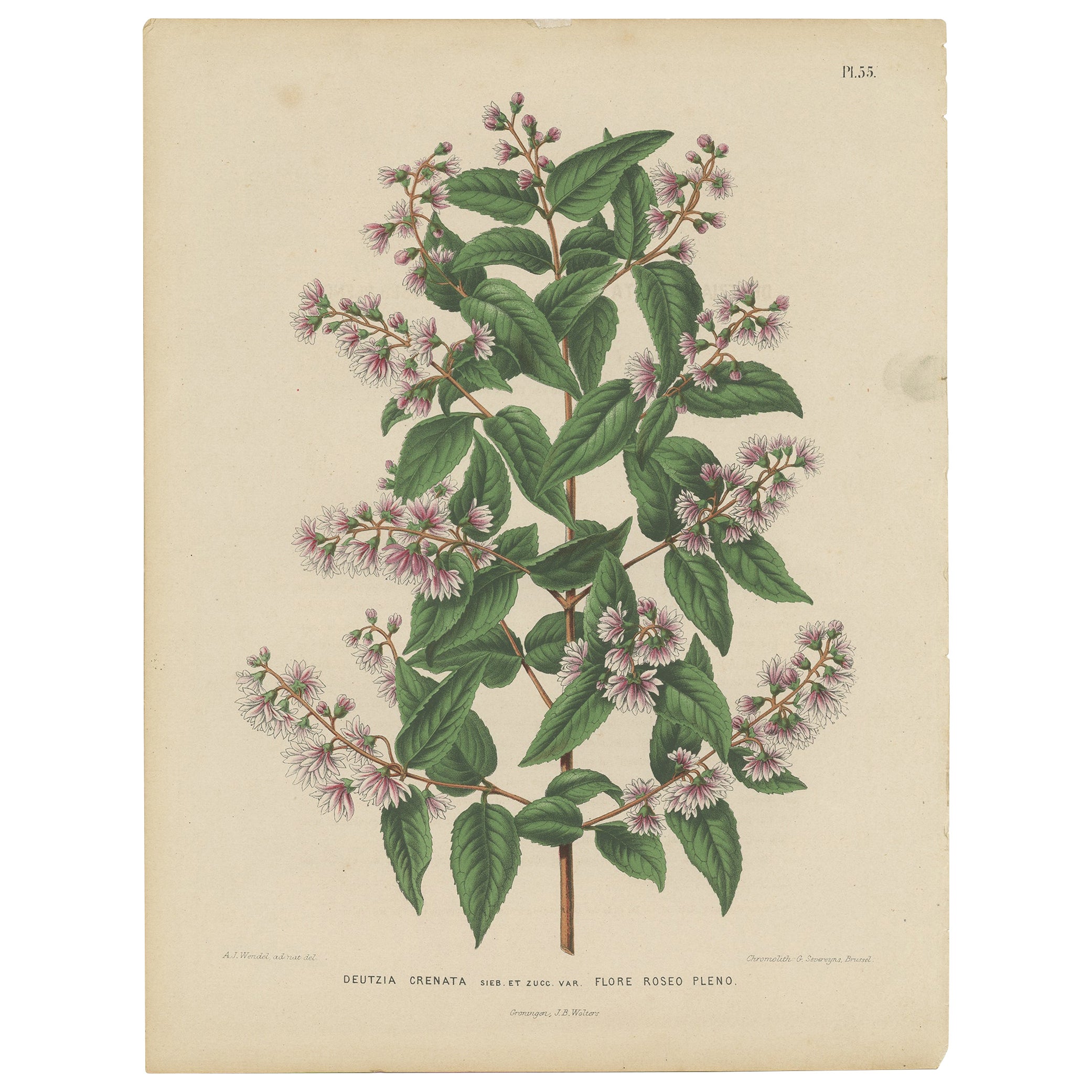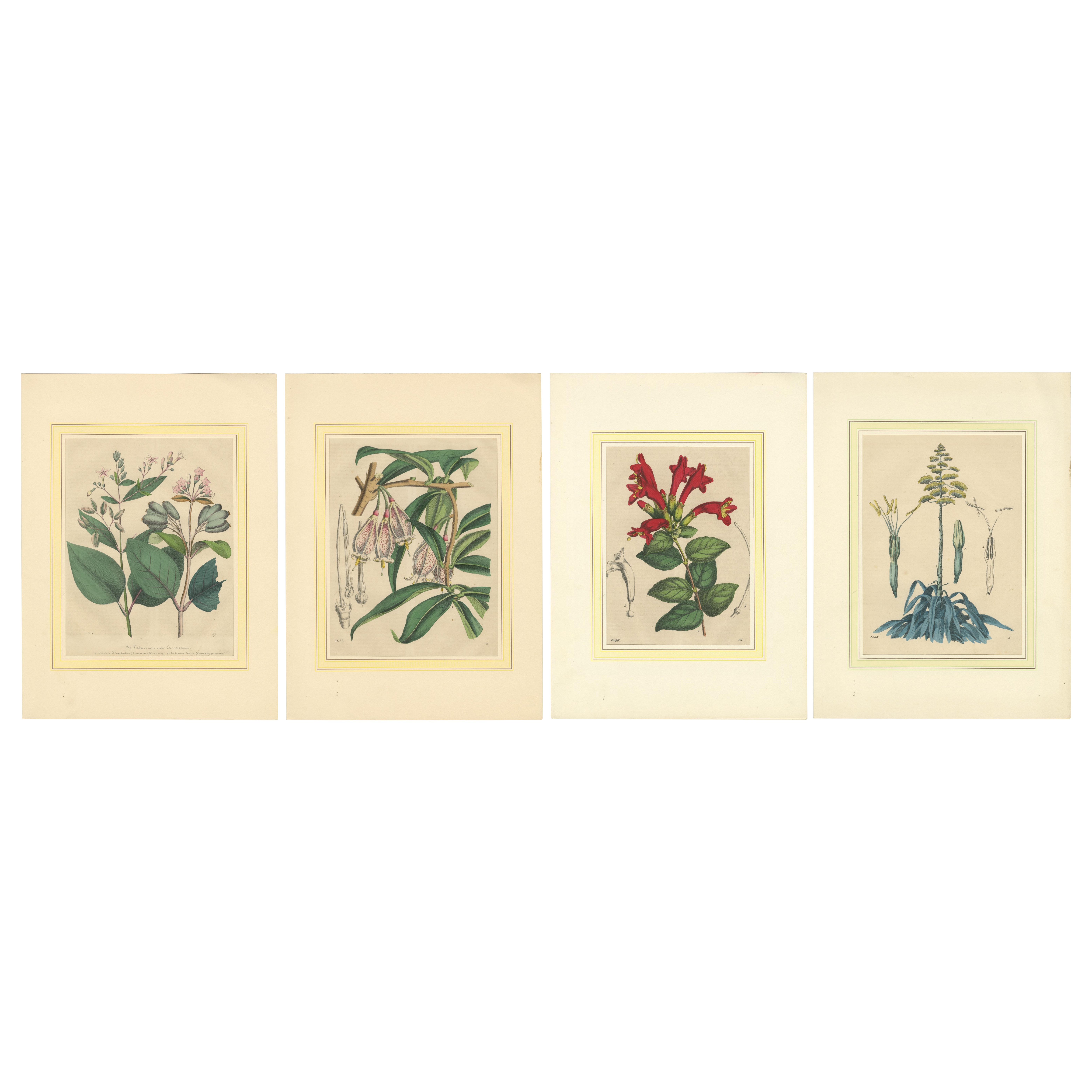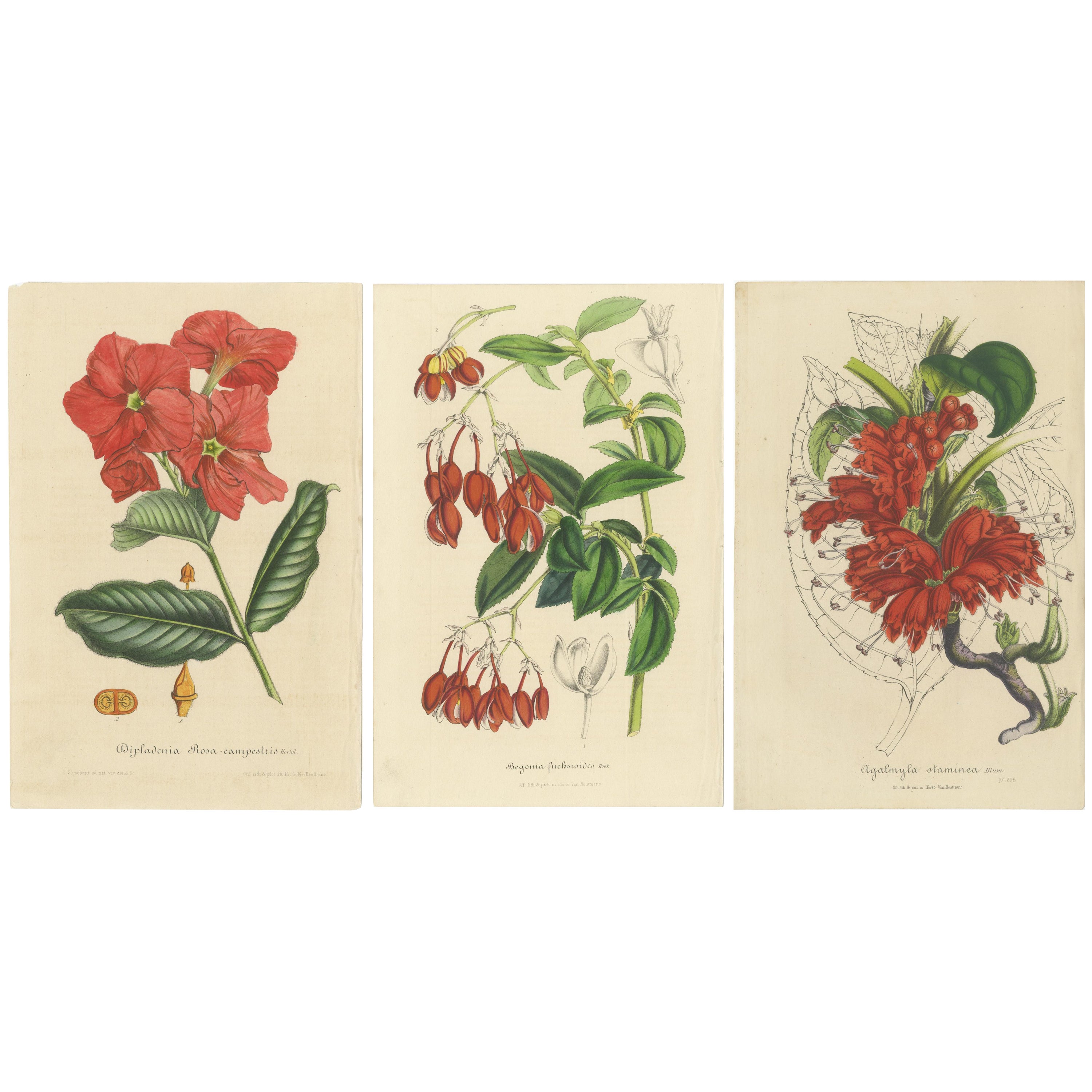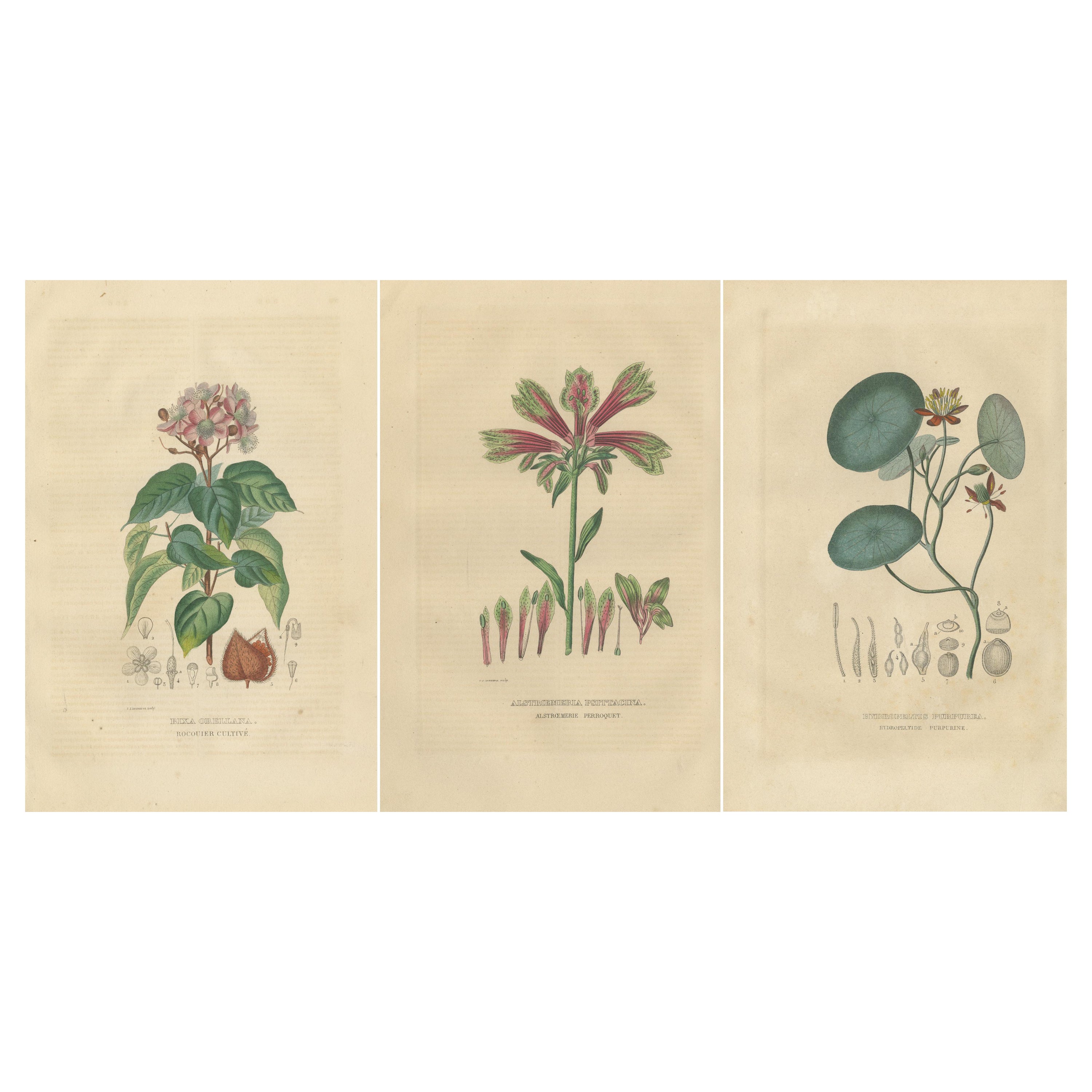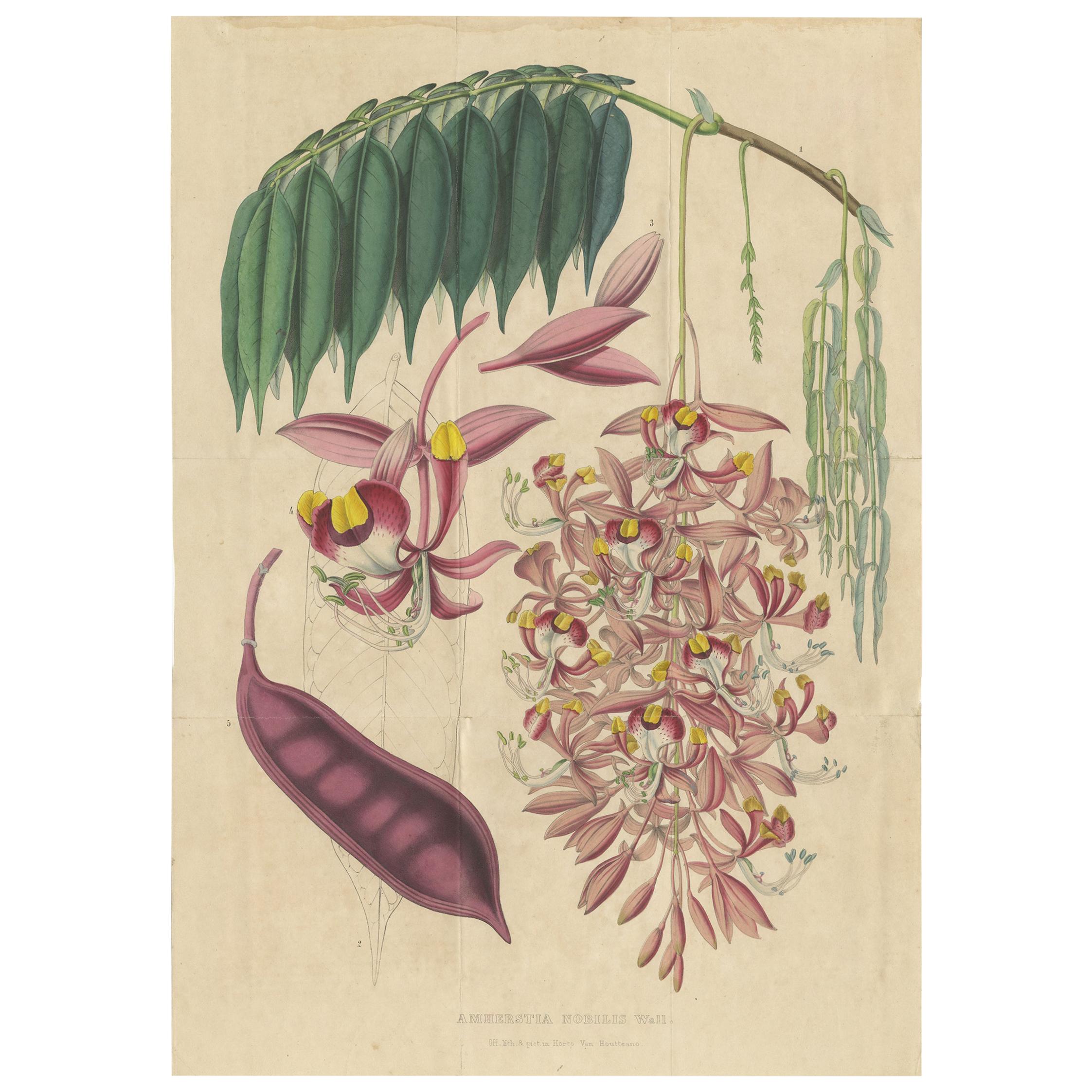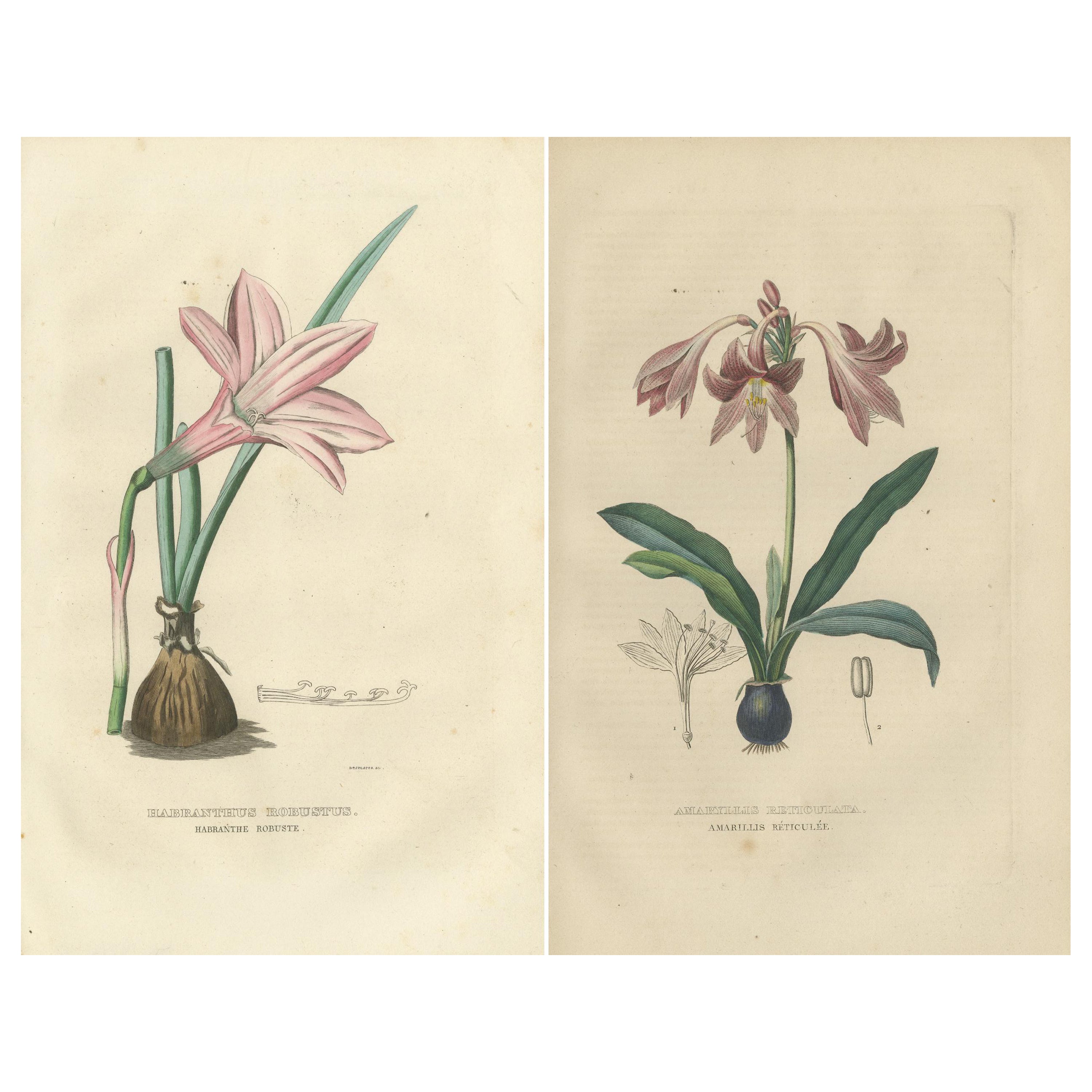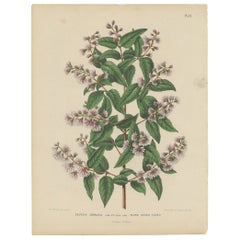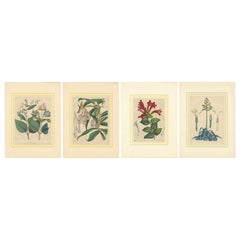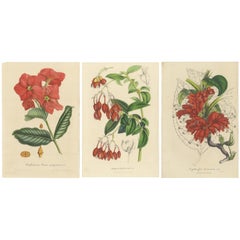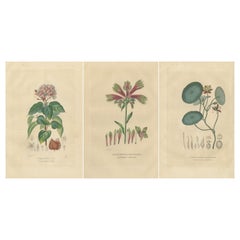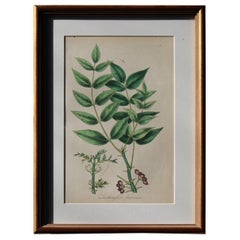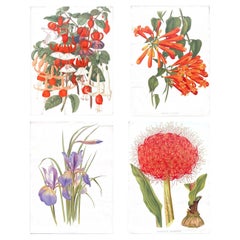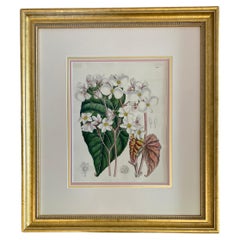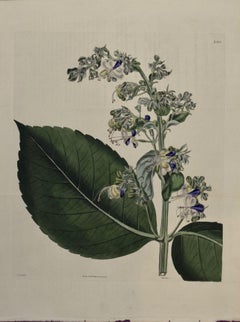Items Similar to Antique handcolored Botany Print of Fuchsia Species, 1863
Want more images or videos?
Request additional images or videos from the seller
1 of 6
Antique handcolored Botany Print of Fuchsia Species, 1863
$333.46
$416.8320% Off
£248.31
£310.3920% Off
€280
€35020% Off
CA$456.78
CA$570.9720% Off
A$509.36
A$636.7020% Off
CHF 265.76
CHF 332.2020% Off
MX$6,250.05
MX$7,812.5620% Off
NOK 3,382.74
NOK 4,228.4220% Off
SEK 3,205.07
SEK 4,006.3420% Off
DKK 2,131.54
DKK 2,664.4220% Off
Shipping
Retrieving quote...The 1stDibs Promise:
Authenticity Guarantee,
Money-Back Guarantee,
24-Hour Cancellation
About the Item
Antique botany print titled 'Fuchsia Variés'. Large chromolithograph of various fuchsia species. This print originates from volume 13 of 'Belgique Horticole' by C. & E. Morren.
- Dimensions:Height: 18.71 in (47.5 cm)Width: 12.8 in (32.5 cm)Depth: 0.02 in (0.5 mm)
- Materials and Techniques:
- Period:
- Date of Manufacture:1863
- Condition:Original folding lines. General age-related toning, minor wear. Please study images carefully.
- Seller Location:Langweer, NL
- Reference Number:Seller: BG-12512-611stDibs: LU3054319911142
About the Seller
5.0
Recognized Seller
These prestigious sellers are industry leaders and represent the highest echelon for item quality and design.
Platinum Seller
Premium sellers with a 4.7+ rating and 24-hour response times
Established in 2009
1stDibs seller since 2017
2,491 sales on 1stDibs
Typical response time: <1 hour
- ShippingRetrieving quote...Shipping from: Langweer, Netherlands
- Return Policy
Authenticity Guarantee
In the unlikely event there’s an issue with an item’s authenticity, contact us within 1 year for a full refund. DetailsMoney-Back Guarantee
If your item is not as described, is damaged in transit, or does not arrive, contact us within 7 days for a full refund. Details24-Hour Cancellation
You have a 24-hour grace period in which to reconsider your purchase, with no questions asked.Vetted Professional Sellers
Our world-class sellers must adhere to strict standards for service and quality, maintaining the integrity of our listings.Price-Match Guarantee
If you find that a seller listed the same item for a lower price elsewhere, we’ll match it.Trusted Global Delivery
Our best-in-class carrier network provides specialized shipping options worldwide, including custom delivery.More From This Seller
View AllAntique Handcolored Flower Print of the Deutzia Crenata, 1868
Located in Langweer, NL
Antique print titled 'Deutzia Crenata'. Lithograph of the Deutzia Crenata, a species of flowering shrub. This print originates from 'Flora : afbeeldingen en beschrijvingen van boomen...
Category
Antique 19th Century Prints
Materials
Paper
$123 Sale Price
20% Off
Set of Four Hand-Colored Botanical Prints from Book of Worlds, 1848
Located in Langweer, NL
Set of Four Hand-Colored Botanical Prints from Book of Worlds, 1848
This elegant set of four hand-colored botanical lithographs originates from the 1848 German natural history publi...
Category
Antique 1840s Prints
Materials
Paper
Exquisite Botanical Illustrations from Curtis’s Botanical Magazine (1847)
Located in Langweer, NL
These beautiful hand-colored botanical illustrations, drawn and lithographed by the renowned artist Walter Hood Fitch, were featured in Sir William Jackson Hooker's *"Curtis's Botanical Magazine,"* published in London in 1847. Fitch was one of the most prolific and skilled botanical illustrators of the 19th century, known for his ability to capture the intricate details and vibrant hues of the plants he depicted.
Sir William Jackson Hooker, a famous British botanist and the director of the Royal Botanic Gardens, Kew, commissioned these illustrations as part of his work to document newly discovered plants from around the world. The *Curtis’s Botanical Magazine* has been published since 1787 and remains one of the longest-running botanical periodicals.
Detailed Descriptions of Each Plant
#### 1. **Dipladenia Rosa-campestris** (*Hortul. ex Veitch*)
- **English Name**: Rose Dipladenia
- **Description**: This illustration showcases *Dipladenia rosa-campestris*, a striking flowering plant known for its showy pink to deep red trumpet-shaped flowers. Native to tropical regions of South America, particularly Brazil, *Dipladenia* belongs to the family Apocynaceae and is prized in horticulture for its vibrant blooms and ability to climb. Fitch's illustration emphasizes the waxy leaves and the vivid color of the petals, bringing the plant to life on the page.
#### 2. **Begonia fuchsioides** (*Hook.*)
- **English Name**: Fuchsia-flowered Begonia
- **Description**: The *Begonia fuchsioides* is depicted with its characteristic red, pendulous flowers, which closely resemble the blooms of fuchsia plants. This species of Begonia is native to tropical regions and is popular for its delicate, bell-shaped flowers and glossy leaves. Fitch’s attention to the arrangement of the leaves and the contrast between the flowers' vibrant red and the soft green leaves provides a lifelike representation of this exotic plant.
#### 3. **Agalmyla staminea** (*Blume*)
- **English Name**: Staminate Agalmyla
- **Description**: This illustration captures the unique red tubular flowers of *Agalmyla staminea*, a plant native to Southeast Asia. The species is part of the Gesneriaceae family and is known for its bright, showy flowers that grow in dense clusters. Fitch’s careful rendering of the plant’s leaves and the intricate veining, along with the vibrant red flowers, highlights his talent for bringing the botanical subject to life with both scientific accuracy and artistic flair.
### About the Makers
#### **Walter Hood Fitch** (Artist and Lithographer)
Walter Hood Fitch (1817–1892) was one of the most influential botanical artists of the 19th century, working primarily with Sir William Hooker and later his son, Joseph Dalton Hooker, at Kew Gardens. He produced thousands of illustrations for various botanical publications, including *Curtis’s Botanical Magazine*, where he was responsible for the majority of its plates from 1834 to 1877. Fitch’s mastery of lithography allowed him to create richly detailed and accurate depictions of plants, with a particular talent for illustrating both the botanical structure and the vibrant colors of flowers.
#### **Sir William Jackson Hooker** (Director and Editor)
Sir William Jackson Hooker (1785–1865) was a prominent British botanist and the director of the Royal Botanic Gardens, Kew. Under his leadership, Kew Gardens expanded its collection of plants from around the world, and Hooker was instrumental in promoting the scientific study and illustration of these species. As the editor of *Curtis’s Botanical Magazine*, Hooker collaborated with Fitch to document and share the beauty and diversity of plants with the scientific community and the public.
### The Lithographic Technique
Lithography, particularly chromolithography, was a crucial innovation in botanical illustration. Fitch was skilled in the traditional method of lithography, where an image was drawn onto a stone plate with a greasy substance and then inked for printing. Hand-coloring was often applied afterward to bring the prints to life, as seen in these illustrations. This method allowed for highly detailed, accurate representations of plants and their botanical features, making it invaluable for both scientific study and aesthetic appreciation.
### Conclusion
These prints from *Curtis’s Botanical Magazine* reflect the height of botanical art in the mid-19th century. The combination of Walter Fitch...
Category
Antique 1840s Prints
Materials
Paper
$409 Sale Price / set
20% Off
Heritage Blossoms: A Trio of 1845 Hand-Colored Botanical Engravings
Located in Langweer, NL
These exquisite engravings from the 'Dictionnaire Classique des Sciences Naturelles' epitomize the symbiosis of art and science in the mid-19th century. Authored by Pierre Auguste Jo...
Category
Antique Mid-19th Century Prints
Materials
Paper
$419 Sale Price / set
20% Off
Free Shipping
Antique Botany Print of the Amherstia Nobilis by Van Houtte, 1849
Located in Langweer, NL
Original antique botany print titled 'Amherstia Nobilis'. Large decorative lithograph of the Amherstia Nobilis, a tropical tree with large, showy flowers. This print originates from volume 5 of 'Flore des serres et des jardins de l'Europe' by Louis van Houtte.
Category
Antique Mid-19th Century Prints
Materials
Paper
$285 Sale Price
20% Off
Vintage Verdure: Original Hand-Colored Engravings of 1845 Flora
Located in Langweer, NL
These hand-colored engravings are delicate illustrations of select flora from the 'Dictionnaire Classique des Sciences Naturelles' by Pierre Auguste Joseph Drapiez, published in Brus...
Category
Antique Mid-19th Century Prints
Materials
Paper
$352 Sale Price / set
20% Off
Free Shipping
You May Also Like
1850 12 Hand Coloured Botanical Plates From the American Practice of Medicine
Located in Lowestoft, GB
A collection of 12 mid-19th century hand colured engravings of botanical specimens from the American Practice of Medicine, 1850
Each has been professionally mounted and framed in a ...
Category
Antique Mid-19th Century American Victorian Decorative Art
Materials
Paper
Original 1880s Botanical Print of Hæmanthus Kalbreyeri — Vibrant Antique Chromol
Located in Fukuoka, JP
A striking original chromolithograph from the 1880s, this botanical print features the dramatic Hæmanthus kalbreyeri, also known as the blood lily. Characterized by its intense red s...
Category
Antique 19th Century French Prints
Materials
Paper
John Nugent Fitch Orchids, 19th Century Hand Colored Engraving Botanical Print
By John Nugent Fitch
Located in Miami, FL
This beautiful, original hand-colored orchid lithograph of "Begonia Scharffii" Orchids by John Nugent Fitch is plate number 7028 from Robert Warner's publication 'The Orchid Album, C...
Category
Antique Mid-19th Century British Victorian Prints
Materials
Wood, Paper
A 19th Century Curtis Hand-colored Engraving of a Flowering Clerodendrum Plant
By William Curtis
Located in Alamo, CA
This early 19th century hand-colored double fold-out botanical engraving is entitled "Clerodendrum Macrophyllum" (Broad-Leaved Clerodendrum), plate 2356, published in London in 1824 ...
Category
1820s Naturalistic Still-life Prints
Materials
Engraving
Bignonia venusta – Antique Botanical Chromolithograph, 1880s
Located in Fukuoka, JP
A striking original botanical print from the 1880s, featuring Bignonia venusta, also known as flame vine or orange trumpet vine. This brilliantly colored illustration captures the dr...
Category
Antique 19th Century French Prints
Materials
Paper
Flowering Lyons' Chelone Botanical: A 19th C. Hand-colored Engraving by Curtis
By William Curtis
Located in Alamo, CA
This early 19th century hand-colored double fold-out botanical engraving is entitled "Chelone Major" (Flowering Lyons' Chelone plant), plate 1864, published in London in 1816 in Will...
Category
1810s Naturalistic Still-life Prints
Materials
Engraving
More Ways To Browse
Jean Baptiste Madou
Louis Wain Cats
Martinet Birds
Spoonbill Bird
Alexander Wilson Birds
Bird Prints Puffin
French Ledger
Print By Daniel Giraud Elliot
Vintage Botanical Rose Prints
Zoology Charts
Islamic Stained Glass
Louis Prang Chromolithograph
Picasso Artist Proof
Pierre Bouillon
Ruff Bird
Vivant Denon
Antique Cecil Aldin Signed Print
Antique Trout Prints
